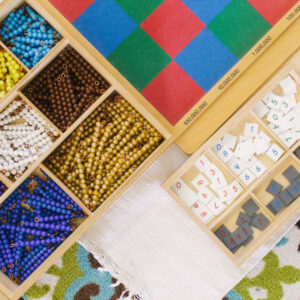
A carefully sequenced progression of mathematical activities from concrete to more abstract materials, simple to increasingly complex operations and lastly, tools for memorization of facts ensure a child’s whole brain development. The process and problem solving are first and foremost. Movement, active participation, and opportunities to problem solve, stimulate all four lobes of the brain, and nourish the child’s interest. Dr. Montessori created math materials that spark the imagination of the eagerly curious child.
Mathematical concepts are learned with ease and true understanding because the materials and lessons connect the hand and the mind in a most crucial and powerful way.
Numeration
Children develop a solid understanding of numbers, the decimal system and important concepts that relate to numbers and patterns.
• Numbers 0-10
• Odd and even numbers
• Teen numbers
• Tens numbers
• Counting 1-100
• Writing and reading small and large numbers
• Research of ten
• Hierarchy of numbers/association of symbol and quantity
• Decimal system with golden beads and the stamp game
• Linear and skip counting up to 1000
• Hierarchy of numbers
• Fractions: equivalency/entomology
• Quantities and symbols to the 1,000th
• Fraction and power equivalencies
Operations
Beginning with very concrete materials the child develops a deep understanding of numbers, their patterns and properties. Working with these materials through exploration, operations, and movements, the child is able to move towards abstraction in a meaningful and enjoyable way.
• Static and dynamic addition
• Static and dynamic subtraction,
• Static and dynamic multiplication
• Static and dynamic division
• Associative/distributive properties
• Math operations with decimals/fractions
• Word problems
Memorization
Through key lessons and specially designed materials, children work towards memorization of math facts and operations.
• Snake game
• Special cases of math operations
• Addition/subtraction strip boards
• Finger charts
• Dissociative/cumulative properties
• Inverse products
• Multiplication/division boards
• Bingo games for all operations
• Bead chains for skip counting and multiplication
• Binomials
• Analysis of a square
Geometry
Montessori philosophy and geometry curriculum speaks to the whole child bringing the communication and energy of the universe into cognizance. In turn, the child advances ever closer to abstraction. Initiation of the study of geometry is the introduction of the triangle, circle, along with the square. These figures are isolated in order to present to the child representations of shapes found in nature.
A child’s interest in architecture, art history, science, culture, mathematics, music and well, pretty much anything can be ignited through the thoughtful, appealing materials and lessons in geometry.
• Sensorial exploration of constructive triangles
• Sensorial exploration of the geometric cabinet(circles, squares, polygons)
• Geometric solids (cube, prisms, pyramids, spheres)
• Geometric terms (solid, surface, line, point)
• Planes and solids
• Regions and figures (polygons, closed curve, crossed, convex, concave)
• Types of lines
• Parts of the line
• Study of triangles (types, angles, sides, parts, terms)
• Measurements of angles/fractions
• Study of polygons, circles, quadrilaterals
• Congruence/equivalency/similarity
• Volume and area
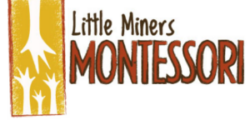
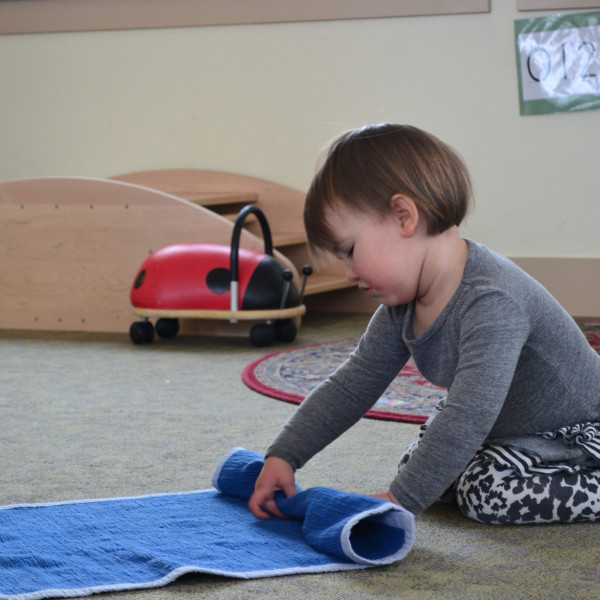
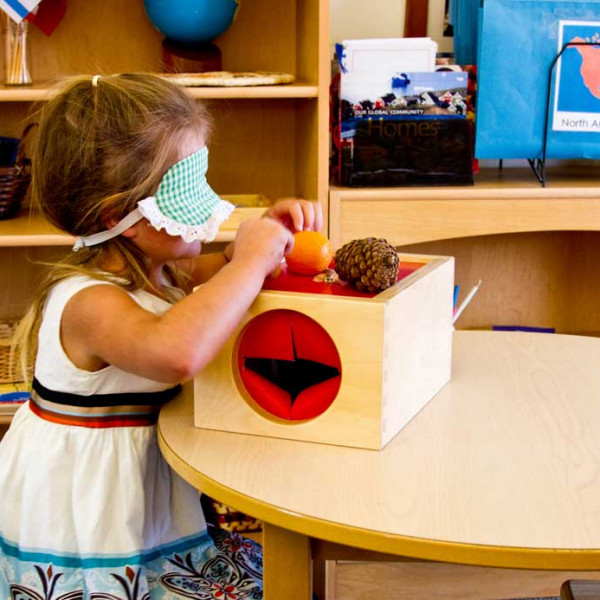
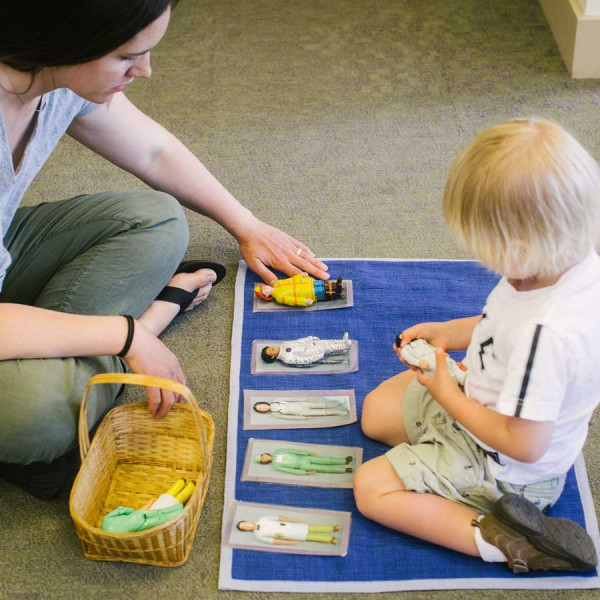
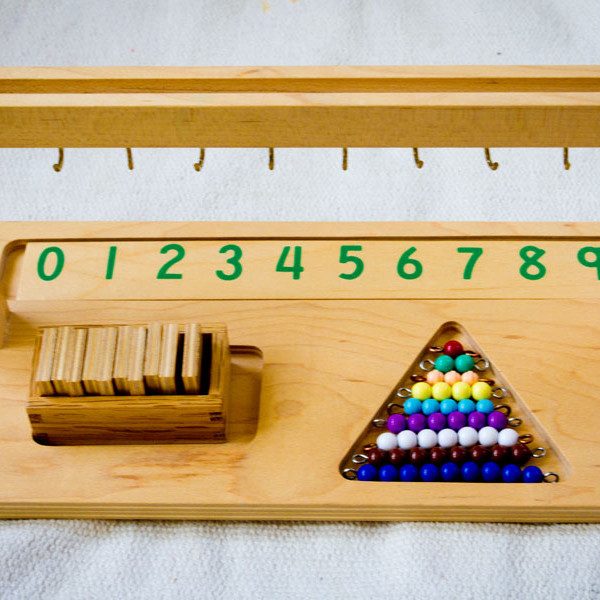

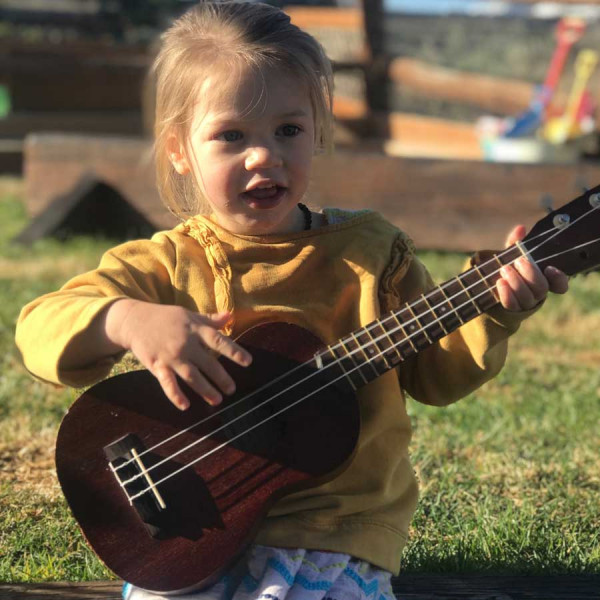

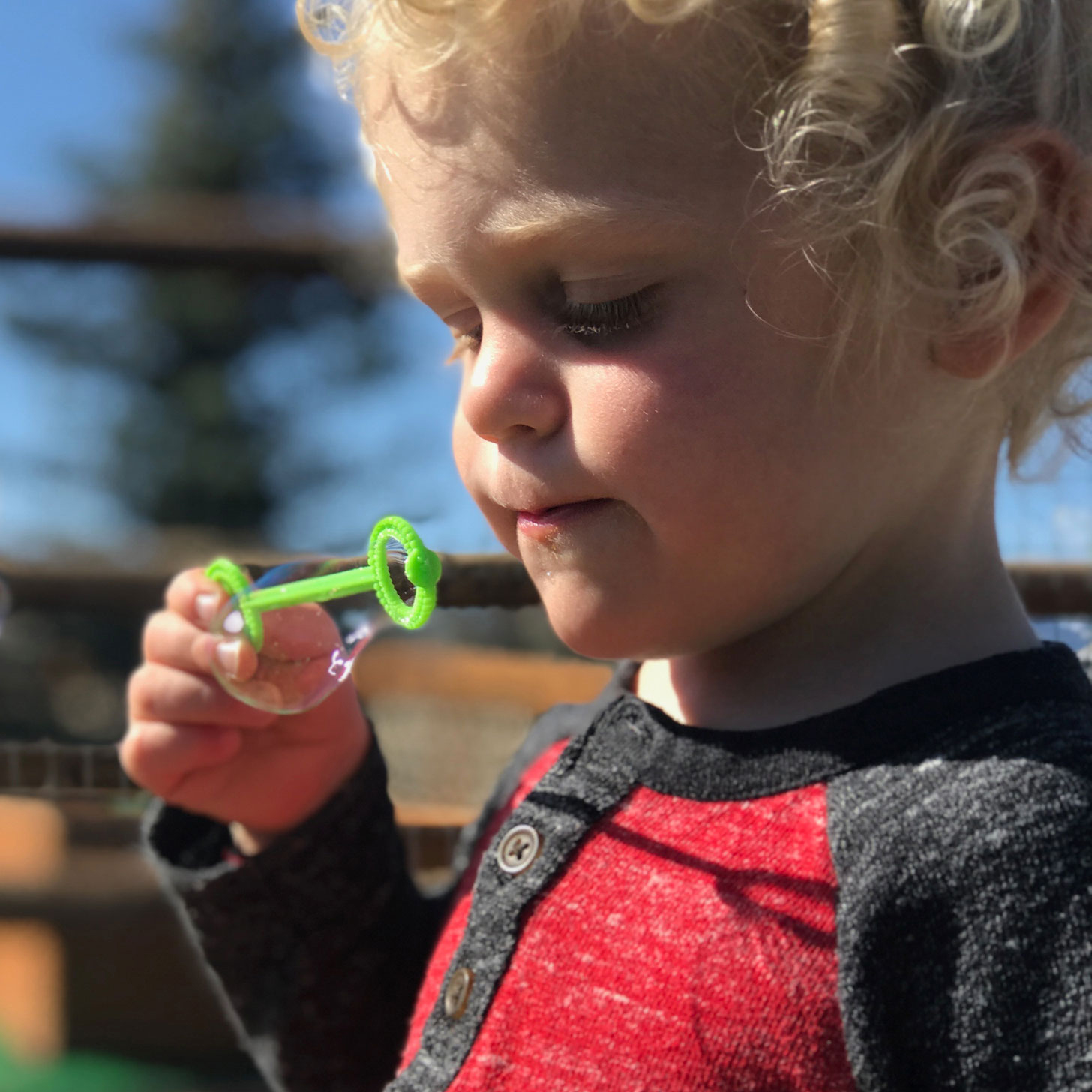
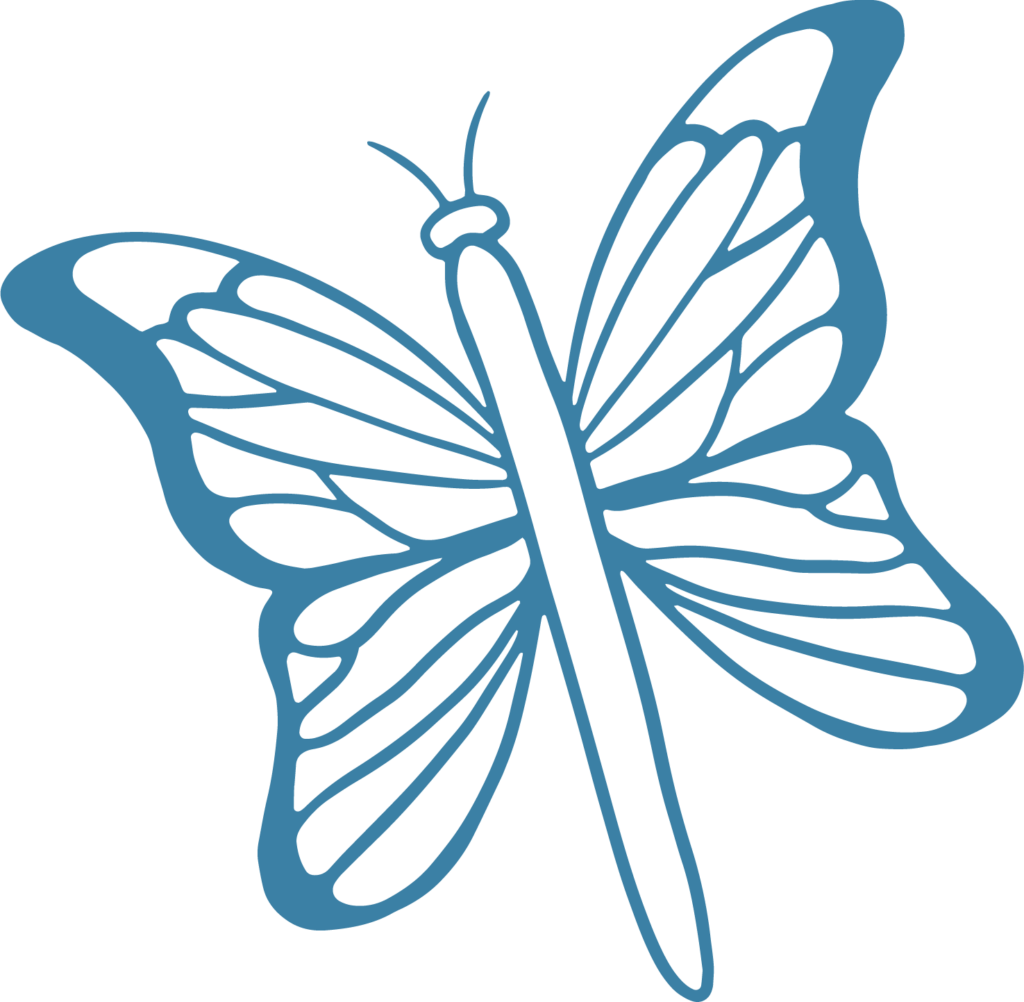


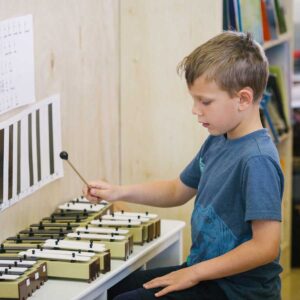
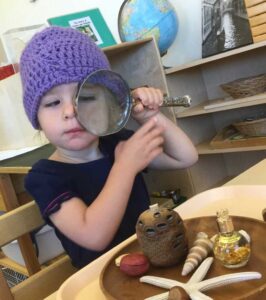
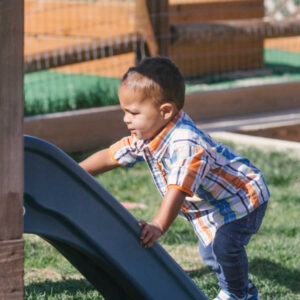







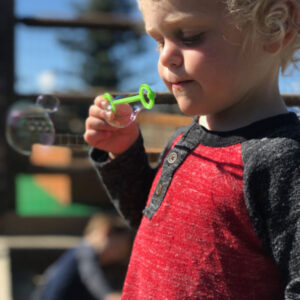
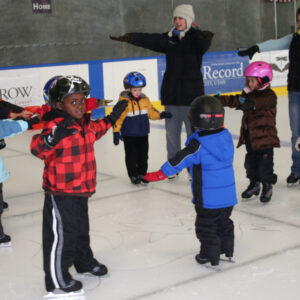
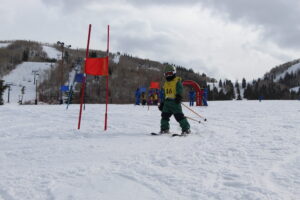
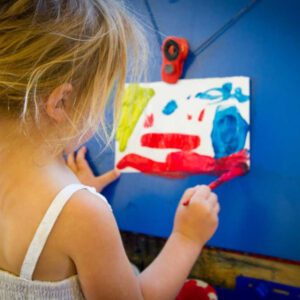

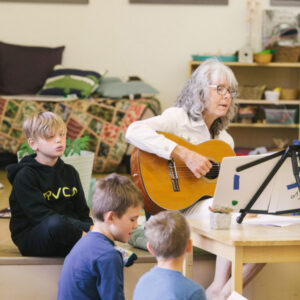
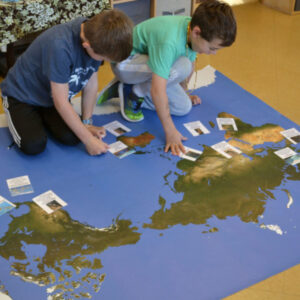


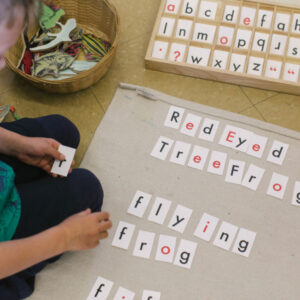

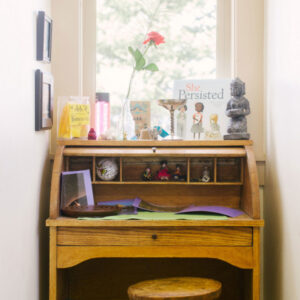
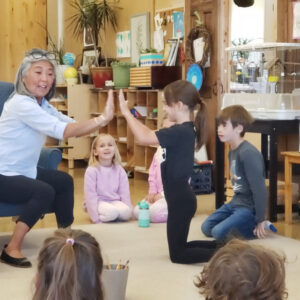
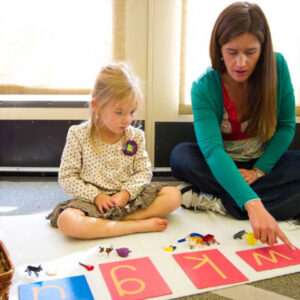 This is the culminating year of the Early-Childhood cycle which provides an extraordinary opportunity for the 5 and 6 year-olds to develop their leadership skills. Kindergartners act as positive peer models for their younger classmates. They enjoy their positions of responsibility that further strengthen their own capabilities and self-esteem. Everything that children have learned in the previous years as a Montessori student, come together in the Kindergarten year. These children are ready to meet new challenges with confidence and determination.
This is the culminating year of the Early-Childhood cycle which provides an extraordinary opportunity for the 5 and 6 year-olds to develop their leadership skills. Kindergartners act as positive peer models for their younger classmates. They enjoy their positions of responsibility that further strengthen their own capabilities and self-esteem. Everything that children have learned in the previous years as a Montessori student, come together in the Kindergarten year. These children are ready to meet new challenges with confidence and determination.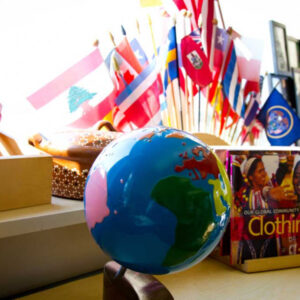 Geography in the Montessori classroom is a true celebration of the world’s diversity as well as it’s common threads. Children gain a deeper global perspective as they are introduced to land forms, continents, and study of the earth’s formation. The Geography curriculum begins with the two hemispheres of the Earth and becomes more detailed as children learn about the continents and the countries.
Geography in the Montessori classroom is a true celebration of the world’s diversity as well as it’s common threads. Children gain a deeper global perspective as they are introduced to land forms, continents, and study of the earth’s formation. The Geography curriculum begins with the two hemispheres of the Earth and becomes more detailed as children learn about the continents and the countries.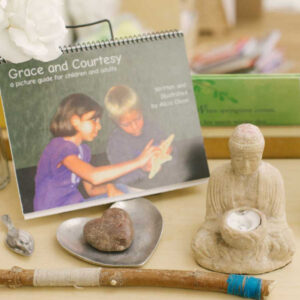 Perhaps the most critical life skill of all for children to master is the ability to work and play with others in a peaceful and caring way. Treating others with dignity and respect are cornerstones of the Montessori philosophy and are taught through Grace and Courtesy exercises.
Perhaps the most critical life skill of all for children to master is the ability to work and play with others in a peaceful and caring way. Treating others with dignity and respect are cornerstones of the Montessori philosophy and are taught through Grace and Courtesy exercises.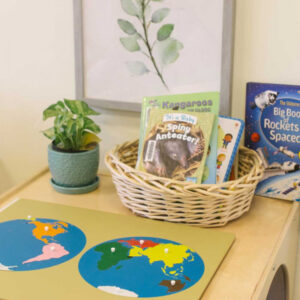 The Cultural area of the Montessori classroom can and should be as broad and varied as the world in which we live. Cultural Studies extend into the Practical Life, Sensorial, Math, and Language areas of the classroom and allow for further exploration with interesting and unique activities. The Cultural Area includes music, art, geography, history, ecology, geology, botany, zoology, and the physical sciences. These “key experiences” provide the child with a sense of wonder through sensorial experiences, literature, music, activities, and artifacts from all around the world. The Montessori classroom encourages exploration and curiosity to define a sense of self and the spirit of the people of the world.
The Cultural area of the Montessori classroom can and should be as broad and varied as the world in which we live. Cultural Studies extend into the Practical Life, Sensorial, Math, and Language areas of the classroom and allow for further exploration with interesting and unique activities. The Cultural Area includes music, art, geography, history, ecology, geology, botany, zoology, and the physical sciences. These “key experiences” provide the child with a sense of wonder through sensorial experiences, literature, music, activities, and artifacts from all around the world. The Montessori classroom encourages exploration and curiosity to define a sense of self and the spirit of the people of the world.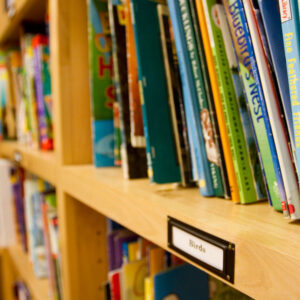 Maria Montessori observed that the potential exists for children to develop the higher language skills of reading and writing with the same ease with which they acquire oral speech. This “explosion” into literacy occurs naturally in the primary years if children are presented with the tools and experiences needed to nourish this organic inclination to learn.
Maria Montessori observed that the potential exists for children to develop the higher language skills of reading and writing with the same ease with which they acquire oral speech. This “explosion” into literacy occurs naturally in the primary years if children are presented with the tools and experiences needed to nourish this organic inclination to learn.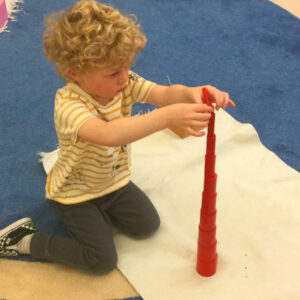 The Sensorial materials are critical for academics in the Montessori classroom. These activities begin with the youngest children in the class. Through various extensions and games they remain interesting to even the oldest children. The Sensorial materials build on the Practical Life activities and prepare the child for math and language through lessons in observation and problem solving.
The Sensorial materials are critical for academics in the Montessori classroom. These activities begin with the youngest children in the class. Through various extensions and games they remain interesting to even the oldest children. The Sensorial materials build on the Practical Life activities and prepare the child for math and language through lessons in observation and problem solving.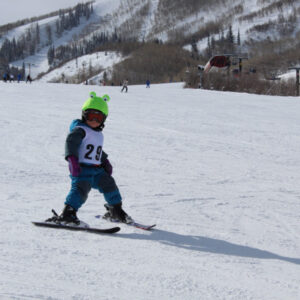 Little Miners offers Yoga, Ski, Ice Skating, Stretch & Grow, as well as plenty of outdoor time.
Little Miners offers Yoga, Ski, Ice Skating, Stretch & Grow, as well as plenty of outdoor time. Info Coming Soon.
Info Coming Soon.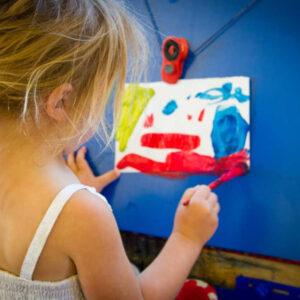 Art and music represent ways to communicate, ideas, imagination, culture, and humanity. Just as a child requires skills to write or dance or swim, she needs to also be given the tools and techniques to create her own masterpieces.
Art and music represent ways to communicate, ideas, imagination, culture, and humanity. Just as a child requires skills to write or dance or swim, she needs to also be given the tools and techniques to create her own masterpieces.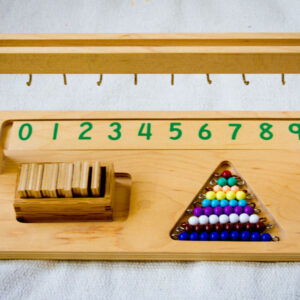 A carefully sequenced progression of mathematical activities from concrete to more abstract materials, simple to increasingly complex operations and lastly, tools for memorization of facts ensure a child’s whole brain development. The process and problem solving are first and foremost. Movement, active participation, and opportunities to problem solve, stimulate all four lobes of the brain, and nourish the child’s interest. Dr. Montessori created math materials that spark the imagination of the eagerly curious child.
A carefully sequenced progression of mathematical activities from concrete to more abstract materials, simple to increasingly complex operations and lastly, tools for memorization of facts ensure a child’s whole brain development. The process and problem solving are first and foremost. Movement, active participation, and opportunities to problem solve, stimulate all four lobes of the brain, and nourish the child’s interest. Dr. Montessori created math materials that spark the imagination of the eagerly curious child.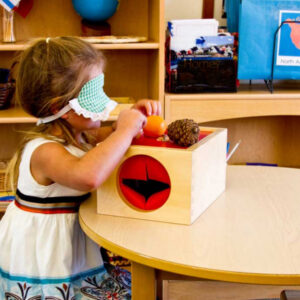 Sensorial activities assist Toddlers in the great task of organizing, integrating and learning about their sensory input. The sensorial materials are designed to simplify learning and awareness of the environment by isolating difficulty; isolating the senses; encouraging mastery through repetition; possessing self-correction within the material; and presenting an attractive appearance to the child.
Sensorial activities assist Toddlers in the great task of organizing, integrating and learning about their sensory input. The sensorial materials are designed to simplify learning and awareness of the environment by isolating difficulty; isolating the senses; encouraging mastery through repetition; possessing self-correction within the material; and presenting an attractive appearance to the child.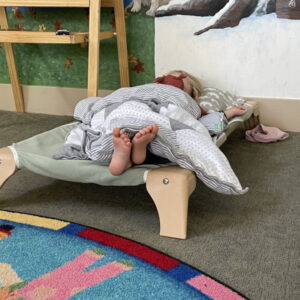 For those children enrolled in the full day schedule nap time will begin around 1:00PM following lunch, recess, and a pre-nap story time. LMM will provide a separate sleeping cot or a pop-out tent for each child.
For those children enrolled in the full day schedule nap time will begin around 1:00PM following lunch, recess, and a pre-nap story time. LMM will provide a separate sleeping cot or a pop-out tent for each child.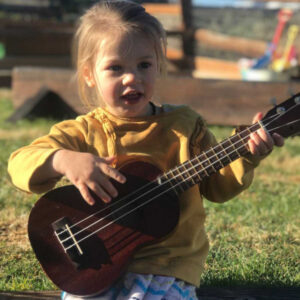 Music & Movement
Music & Movement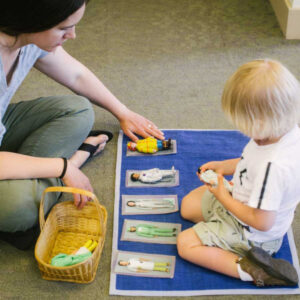 Around the age of two, children’s speech development experiences an explosion of words, soon followed by sentences. The Language materials in the Toddler classroom encourage the refinement and enrichment of language as the first steps on the road to writing and finally reading. Early Language materials and oral exercises like storytelling and reading aloud support the toddler’s need to be immersed in language. Activities include books, puzzles, naming objects like fruits, vegetables and animals, and beginning sound games.
Around the age of two, children’s speech development experiences an explosion of words, soon followed by sentences. The Language materials in the Toddler classroom encourage the refinement and enrichment of language as the first steps on the road to writing and finally reading. Early Language materials and oral exercises like storytelling and reading aloud support the toddler’s need to be immersed in language. Activities include books, puzzles, naming objects like fruits, vegetables and animals, and beginning sound games.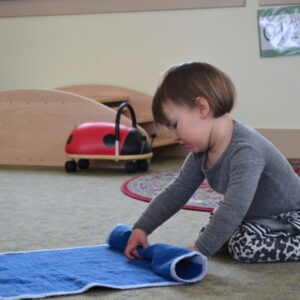 These are the first exercises introduced to the children. They create the foundation upon which all other work in the classroom depends. Practical Life exercises include care of self and the environment, as well as the development of large and fine motor control. These practical experiences in everyday activities are the cornerstone of the Montessori Method.
These are the first exercises introduced to the children. They create the foundation upon which all other work in the classroom depends. Practical Life exercises include care of self and the environment, as well as the development of large and fine motor control. These practical experiences in everyday activities are the cornerstone of the Montessori Method.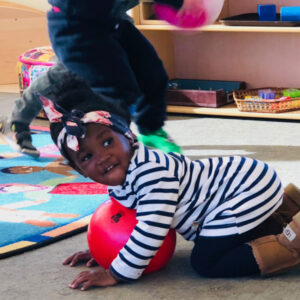 Little Miners has recently partnered our Toddler Program with Stretch-n-Grow of Utah! On Tuesdays and Wednesdays, our toddlers enjoy a 30-minute session of exercising with this fun company. Here is an excerpt from their website about Stretch-n-Grow:
Little Miners has recently partnered our Toddler Program with Stretch-n-Grow of Utah! On Tuesdays and Wednesdays, our toddlers enjoy a 30-minute session of exercising with this fun company. Here is an excerpt from their website about Stretch-n-Grow: